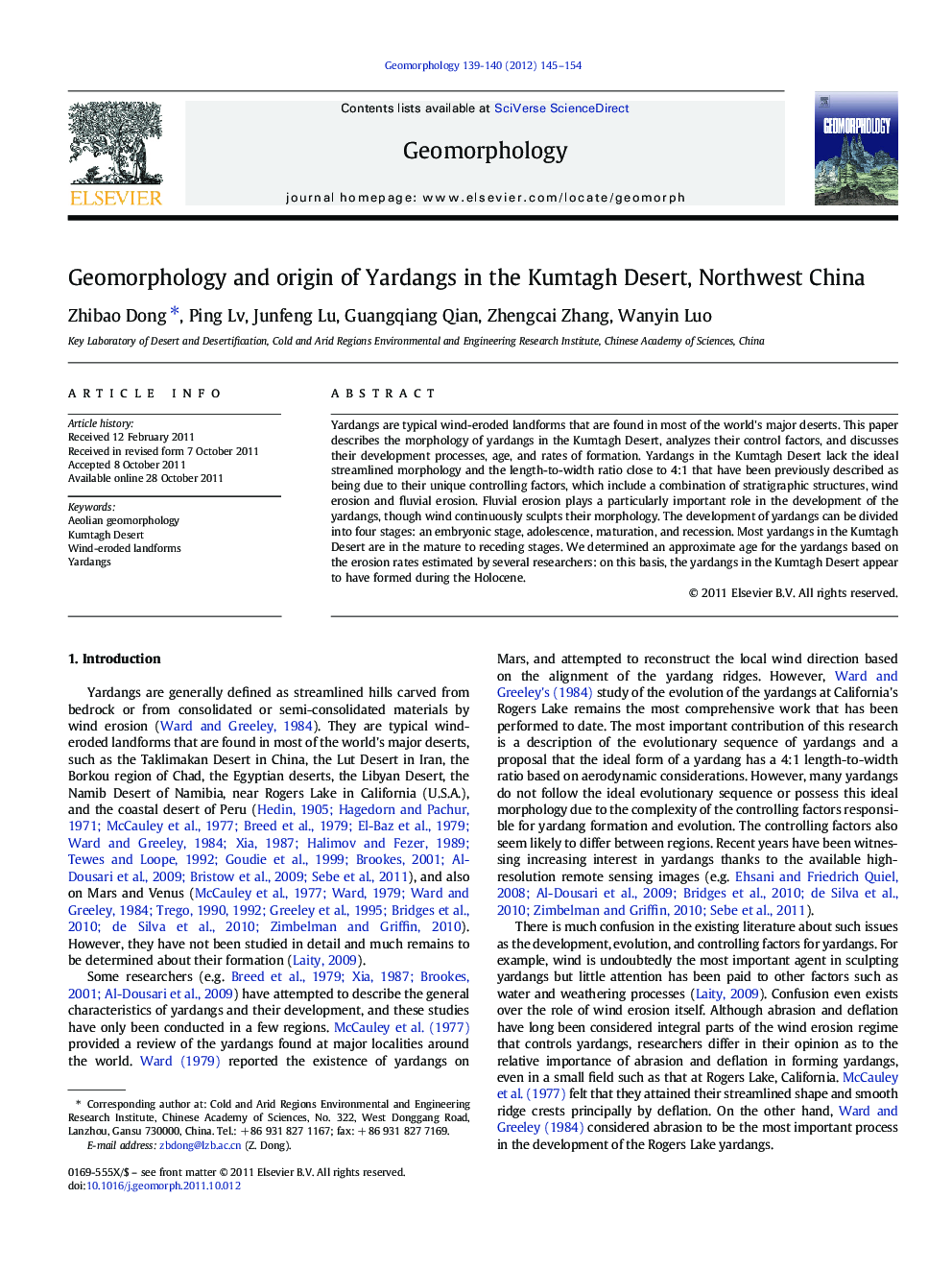| Article ID | Journal | Published Year | Pages | File Type |
|---|---|---|---|---|
| 4685302 | Geomorphology | 2012 | 10 Pages |
Yardangs are typical wind-eroded landforms that are found in most of the world's major deserts. This paper describes the morphology of yardangs in the Kumtagh Desert, analyzes their control factors, and discusses their development processes, age, and rates of formation. Yardangs in the Kumtagh Desert lack the ideal streamlined morphology and the length-to-width ratio close to 4:1 that have been previously described as being due to their unique controlling factors, which include a combination of stratigraphic structures, wind erosion and fluvial erosion. Fluvial erosion plays a particularly important role in the development of the yardangs, though wind continuously sculpts their morphology. The development of yardangs can be divided into four stages: an embryonic stage, adolescence, maturation, and recession. Most yardangs in the Kumtagh Desert are in the mature to receding stages. We determined an approximate age for the yardangs based on the erosion rates estimated by several researchers: on this basis, the yardangs in the Kumtagh Desert appear to have formed during the Holocene.
► We study geomorphology and origin of the yardangs in China's Kumtagh Desert. ► These yardangs do not possess the ideal length: width ratio of 4:1. ► Water erosion plays a significant role in their development. ► They formed in the Holocene and most of them are in the mature to receding stages.
